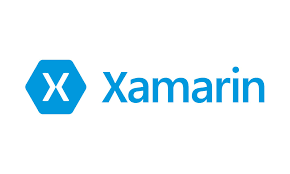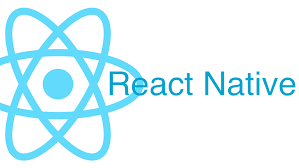Xamarin vs. React Native | Secrets Unlocked
Mobile app development has become a significant industry recently. Of the many tools available for app development, Xamarin and React Native are two of the most potent options available. Both of them are cross-platform framework tools, capable of developing mobile apps that can run simultaneously in different operating systems.
These frameworks come with some fascinating features, leaving many developers confused as to which one to choose from two. To make things slightly more comfortable, we have compared these two frameworks while showcasing their strengths and weaknesses. Let’s focus on the comparisons to gain some more ideas about both these tools and the one that will work best for your purpose.
Here is a summary of the article:
- Xamarin Overview, pros, and cons
- React Native Overview, pros, and cons
- Xamarin vs. React Native | Comparison Table
- Conclusion
Want to learn more? Keep on reading:
Contents
Xamarin Overview

Microsoft’s Xamarin is a popular framework for mobile application development purposes. This framework’s open-source nature makes it easy enough for this app to develop apps that can function effectively on different platforms like iOS, Android, and Windows. Using C# and .Net, Xamarin effectively develops applications for iOS and Android platforms. The apps developed using Xamarin are native, meaning that they will behave precisely like the users’ expectations.
Advantages of Xamarin
Here is a list of advantages that makes Xamarin such a popular choice for native mobile application development:
- Shareable Code
Codes written in Xamarin can be shared across different platforms. This “write once, use everywhere” concept helps in saving a lot of time, effort, and money on app development projects.
- Technical Support by Microsoft
Coming out from the house of Microsoft, Xamarin ensures excellent technical support and stability backup. Additionally, Xamarin courses are available with Microsoft for developers to gain more insight into this framework.
- Simplified Maintenance
Developing apps using the Xamarin framework is more straightforward than expected. Since a single code can be used for different applications, the maintenance part requires minimal effort and less time-consuming. Additionally, the Xamarin community is actively helping developers in providing documentation and related training options.
- Native User Experience
Xamarin ensures complete access to all the native toolkits and APIs used for different platforms like Windows, iOS, and Android. Additionally, the framework also offers native performance and design for each application developed by using it.
Disadvantages of Xamarin
So, is Xamarin only about the positives and marvelous things? If so, why are other competitors finding ways to make a better impact on the industry? Well, there are some disadvantages of Xamarin that may well be hurting it badly. I hope things get sorted out real fast. But for the time being, let’s look at the disadvantages:
- Lagging Updates
This is a significant dispute for Xamarin. We all know that be it iOS or Android; there are updates at regular intervals. But Xamarin developers are unable to use those updates immediately upon their release. Integrating new features into the Xamarin ecosystem requires some time, and hence, the delay is caused.
- Heavy Applications
The applications developed using the Xamarin framework seem to be bigger (twice the size of the native files). Managing such heavy applications require extra effort and more time for adjustment. There are lots and lots of different functionalities and core libraries to deal with. It can lead to an increase in size. Such scenarios can prove to be fatal for some of the projects.
- Smaller Community
The Xamarin community is small enough compared to platform-specific ones. This is why finding help on new technology and features from the Xamarin community gets problematic at times. The community members are only 10% compared to the total number of mobile engineers working with Xamarin.
- Difficulty in complex graphic development
Developing apps with complex graphics is usually difficult in Xamarin. If you plan to build an app with advanced level graphics and visualization, Xamarin may not be the best framework to consider to date. The future may hold something bright for this open-source framework.
React Native

React Native is another popular open-source framework used for the development of cross-platform based mobile applications. React Native uses Jscript and React Open Source Library for the development of the apps. React Native is capable of developing apps for both iOS and Android. Using React Native, it becomes possible to create productive apps with attractive user interfaces.
Although React Native is a popular option for developing cross-platform mobile apps, not everything about it may seem to be favorable. Here, we shall be focusing on the advantages and disadvantages of using React Native.
Benefits of React Native
- Optimal Level Performance
React Native offers enhanced performance with all the native controls and modules. The framework operates through effective interaction with iOS and Android native components for generating codes to every native API without any interference. React Native framework uses an altogether different threap that separates it from the regular UIs and APIs.
- Hot and Live Reloading
React Native supports both Hot and LIVE Reloading.
Hot Reloading is based on the HMR concept. The best part about using HMR (Hot Module Replacement) is that you can use an HMR intermediator to store the updated files (after changes are being made to the file) without hindering the app’s operation in the background.
Live Reloading is used for compiling and reading any changes being by the developer/coder. At the same time, Live Reloading furnishes an entirely new file to the simulator that will automatically read the app from the beginning.
- Simplified User Interface
The uncomplicated, simplified user interface makes React Native such a popular choice. The framework integrates perfectly with JavaScript, making it an open-source framework. Apps developed using react Native enjoy minimal loading time, a more responsive user interface, and seamless UX.
- High Reliability and Stability
Data binding is made simple with React Native. Yes, it is carried out so that the child component is not affected while securing the parent data. It helps in providing solidity to the data binding phase. If any modification is needed to be done to the objects, developers need to change the state before applying any of the updates. This will ensure that only those components that have the permission will get updated.
- Modular Architecture
React Native follows the modular architecture. This allows better stability to the entire application building process. Also, such an architectural style makes it easy enough to receive and generate updates regularly.
- 3rd Party Plugin Support
React Native has options for 3rd party plugin support. This is needed since certain components are absent from the actual framework of React Native. With 3rd party plugin support, developers will have access to different 3rd party plugins like native modules and Jscript modules.
Disadvantages of React Native
- Complicated User Interface
The user interface of React Native, as per several coders, seems to be somewhat complicated. If you are planning to develop apps with features like screen transitions, complex gestures, and even animations, React Native may not be the best option to consider. The use of unified API seems to be a challenging proposition for React Native.
- Memory Management
React Native is integrated with JavaScript. So it may not be a great option to use for the development of computation-intensive apps. If used, React Native will result in reducing the overall speed and performance of these apps.
- Minimal Security
This is a big con of React Native. React Native is an open-source framework that works with JavaScript libraries, making it less secure than the competitors. As we all know, JavaScript’s fragile nature, React Native, is not the ideal choice to develop highly secured apps in the banking and finance sectors.
- Slightly new to the field
Since React Native is relatively new to the field, this framework’s entire life cycle has still not been appropriately assessed. There are instances when the React Native Components have performed negatively.
Xaramin vs. React Native Comparison
| Xaramin | React-Native | |
| When to use? | Development team with previous experience with C# | Development team with previous experience with JavaScript |
| Parent Organization | Microsoft | |
| Launch Date | 2013 | 2015 |
| Cross-Platform | Yes | Yes |
| Popularity | Less Popular | More Popular |
| Popular use cases | Kellog’s Slack Bosh | Facebook Tesla |
| Programming Language | .NET #C | JavaScript |
| Environment | Visual Studio | Flexible IDE |
| Performance | Near-to-native | Near-to-native |
| Components | Complete UI Toolkit | Buttons, Text Inputs, and less sophisticated components |
| Compilation | Just In Time (JIT) and Ahead of Time (AOT) | Just in Time (JIT) for Android only |
| Code Reuse | Yes | Yes |
| Pricing | Free for personal use and small companies. | Free |
| Community Size | Small | Large |
| Support | Microsoft / Community | Community |
Conclusion
Xamarin or React Native – which one did you find better in terms of pros and cons? Well, each of these frameworks comes with its own sets of advantages and disadvantages.
A final decision will depend on the project requirements and specifications, but a good rule of thumb relies on your development team’s previous experience. If they are more experience with JavaScript, you should go for React-Native. On the other hand, if your team is more experience with C#, you should go for Xamarin.
FAQ
What is Xamarin?
Microsoft’s Xamarin is a popular framework for mobile application development purposes. This framework’s open-source nature makes it easy enough for this app to develop apps that can function effectively on different platforms like iOS, Android, and Windows.
What is React Native?
React Native is another popular open-source framework used for the development of cross-platform based mobile applications. React Native uses Jscript and React Open Source Library for the development of the apps.
Which is better? Xamarin or React Native?
A final decision will depend on the project requirements and specifications, but a good rule of thumb relies on your development team’s previous experience. If they are more experience with JavaScript, you should go for React-Native. On the other hand, if your team is more experience with C#, you should go for Xamarin.



